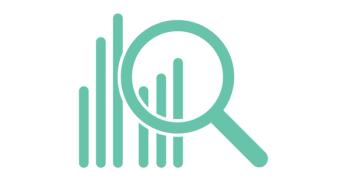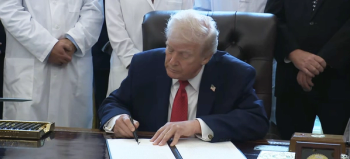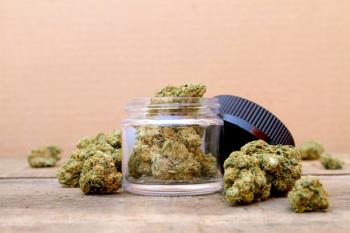
The Cannabis Industry: An Analytical Chemists Dream and Nightmare
When I want to hear some humorous stories, there are few friends in the instrument manufacturing and sales business I can contact. If I ask them about their recent experiences with the cannabis industry, their stories will cover topics ranging from instruments purchased using duffel bags of cash (cue images of large men in suits and sunglasses packing heat) to recent college graduates who cleared $25 million in their first year of business selling cannabis butter (cue images of large men at breakfast laughing uncontrollably).
To say that the cannabis industry in the United States is an emerging market is quite an understatement. Forbes estimated the legalized cannabis industry to be worth more than $7 billion in 2016, and that by 2020 it will create more jobs than manufacturing and the market will grow to almost $25 billion (1). That’s a pretty hefty growth rate.
The cannabis industry is an interesting field from an analytical chemistry viewpoint, as well. It is rather surprising to see that the literature is still quite sparse with regard to studies detailing methodologies tailored to cannabis natural product and contaminant analysis. Given our recent interest in this topic, Catherine Fenselau (Distinguished University Professor at the University of Maryland) contacted me to send me one of her previous papers in the area. It is a very nice piece of work profiling phytosterols from a cannabis extract using gas chromatography–mass spectrometry (GC–MS)-from 1972 (2)! Here we are 45 years later, and a seemingly comprehensive review we recently published on analytical methods for cannabis natural products analysis included just 150 references (3).
The opportunities in this field are an analytical chemist’s dream, but there are still plenty of nightmares. Some of these nightmares revolve around state control of testing regulations. Testing labs wince as California sets to roll out their seemingly overkill pesticide testing requirements. Please don’t forget that you need both GC–MS and liquid chromatography–mass spectrometry (LC–MS) to address the analysis of a comprehensive list of pesticides (4). At the North American Chemical Residues Workshop in Naples, Florida, Heather Krug, who heads decision-making for cannabis testing in Colorado, regaled the audience with stories about some tough cases. Recently (5), 50 varieties of medical marijuana, concentrates, and edibles produced from cannabis grown with an unapproved pesticide (myclobutanil) were recalled from the market. Some have been on the market since March 2017. This case is not an isolated incident (6). Clearly, there is an impetus to require the products to be tested for a fairly extensive list of pesticides-but will the labs then actually test for those pesticides?
If that seems a strange question-whether all labs will test for them, or whether some might cut corners-consider the following scenario: A cannabis grower takes his product into a lab for potency testing. The testing lab reports the product to contain 25% THC when in fact it contains 20%. The grower can sell the product for more money and will continue to use and pay for this testing lab’s services. This practice is egregious, but with so much money to make and so many clamoring for business, it is not surprising. In the context of recreational cannabis, onlookers might not care; however, a similar scenario could be envisioned for testing of cannabinoids that bring various therapeutic benefits, and then the consumers would not get the benefit they expected.
Likely, it is the one or two bad apples that will spoil the bushel and bring down harsher regulations. But, different states still require different levels of stringency in testing for contaminants such as pesticides, heavy metals, or microbes. You can bet that they also have different levels of stringency for policing testing operations.
Being a Schedule 1 drug federally means that groups like ours in Texas cannot legally possess cannabis for testing without Drug Enforcement Agency (DEA) approval. Even if we had DEA approval, then we would still have a hard time getting interesting strains of cannabis product to work on, since it cannot be legally transported across state lines. I am guessing that supplies of cannabis available to researchers in Texas pales in comparison to supplies available in Oregon. If you want to start a program for isolation, determination, and testing of new cannabinoids and terpenes, then you ought to be in a state where you can obtain strains of plant that have been bred to produce different abundances of these compounds.
One positive trend is the addition of new tracks on cannabis analysis at major analytical conferences. I have sat through a couple of entertaining talks about cannabis at such conferences, and the people I listened to knew what they were talking about. Even more entertaining, so I hear, are the whole series of conferences dedicated solely to cannabis science and related considerations. I still have not made it to one of those, so I will hold my comments until I do.
Where I believe there is special opportunity in cannabis science is to open up the analytical toolbox, and to use some newer technologies that are not incorporated into mainstream testing laboratories. We recently published a series of papers where we demonstrated the potential for GC–MS using a triple-quadrupole mass analyzer (GC–QQQ-MS) (7,8) and GC with vacuum ultraviolet detection (GC–VUV) (9) to contribute new information. The GC–QQQ-MS system is underappreciated for cannabinoid analysis. Operation in multiple reaction monitoring mode provides excellent specificity and sensitivity, even for extracts from complex matrices. Silylation is necessary to preserve carboxylated cannabinoids in the hot injection port, but this approach is a tried and true derivatization procedure. GC–VUV provides another tool for differentiation of isomers, and the cannabinoid class of molecules features a lot of isomeric compounds. In those cases where a mass spectrometer has trouble differentiating isomers, the VUV detector excels. Moving from cannabinoids to terpenes, GC–VUV ought to be wholly superior for the speciation of known terpenes and the discovery of new terpene compounds. Terpenes and terpenoids are a vast class of compounds containing many isomeric species. More-extensive work on GC–VUV for terpene analysis has been published previously (10).
In our analytical chemistry research laboratory, we are interested in discovering new chemicals, but we are also interested in making sure that analytical measurements are reliable. The Wild West nature of the cannabis industry has brought with it cringe-worthy situations in the eyes of scientists. Not everyone can just step in front of an analytical instrument and make reliable measurements, even if they fully intend to. It is critical in the end that the fundamentals of separation science be practiced and relied upon for both guiding new discoveries and protecting the quality of products meant to be consumed by many individuals for both therapeutic and recreational purposes.
Kevin A. Schug is a Full Professor and Shimadzu Distinguished Professor of Analytical Chemistry in the Department of Chemistry & Biochemistry at The University of Texas (UT) at Arlington. He joined the faculty at UT Arlington in 2005 after completing a Ph.D. in Chemistry at Virginia Tech under the direction of Prof. Harold M. McNair and a post-doctoral fellowship at the University of Vienna under Prof. Wolfgang Lindner. Research in the Schug group spans fundamental and applied areas of separation science and mass spectrometry. Schug was named the LCGC Emerging Leader in Chromatography in 2009, and most recently has been named the 2012 American Chemical Society Division of Analytical Chemistry Young Investigator in Separation Science awardee.
Disclosures:
This article was originally published as part of The LCGC Blog series written by Kevin A. Schug for
References:
https://www.forbes.com/sites/debraborchardt/2017/02/22/marijuana-industry-projected-to-create-more-jobs-than-manufacturing-by-2020/#612b37ad3fa9 - C. Fenselau and G. Hermann, J. Forensic Sci.17, 309–312 (1972).
- A. Leghissa, Z.L. Hildenbrand, and K.A. Schug, J. Sep. Sci. 2018 (ASAP). doi: 10.1002/jssc.201701003
http://www.chromatographyonline.com/lcgc-blog-pesticide-analysis-cannabis-choosing-right-technique http://www.denverpost.com/2017/11/03/tree-of-wellness-medical-pot-product-recall/ http://www.denverpost.com/2016/03/17/state-issues-massive-recall-of-pesticide-tainted-marijuana/ - A. Leghissa, Z.L. Hildenbrand, F.W. Foss Jr., and K.A. Schug, Sep. Sci. Plus 2018 (In Press). doi: 10.1002/sscp.201700006
- A. Leghissa, Z.L. Hildenbrand, F.W. Foss Jr., and K.A. Schug, J. Sep. Sci. 2018 (ASAP). doi: 10.1002/jssc.201700946
- A. Leghissa, J. Smuts, C. Qiu, Z.L. Hildenbrand, and K.A. Schug, Sep. Sci. Plus 2018 (in press). doi: 10.1002/sscp.201700005
- C. Qiu, J. Smuts, and K.A. Schug, J. Sep. Sci. 40, 869–877 (2017).
Newsletter
Unlock the latest breakthroughs in cannabis science—subscribe now to get expert insights, research, and industry updates delivered to your inbox.




